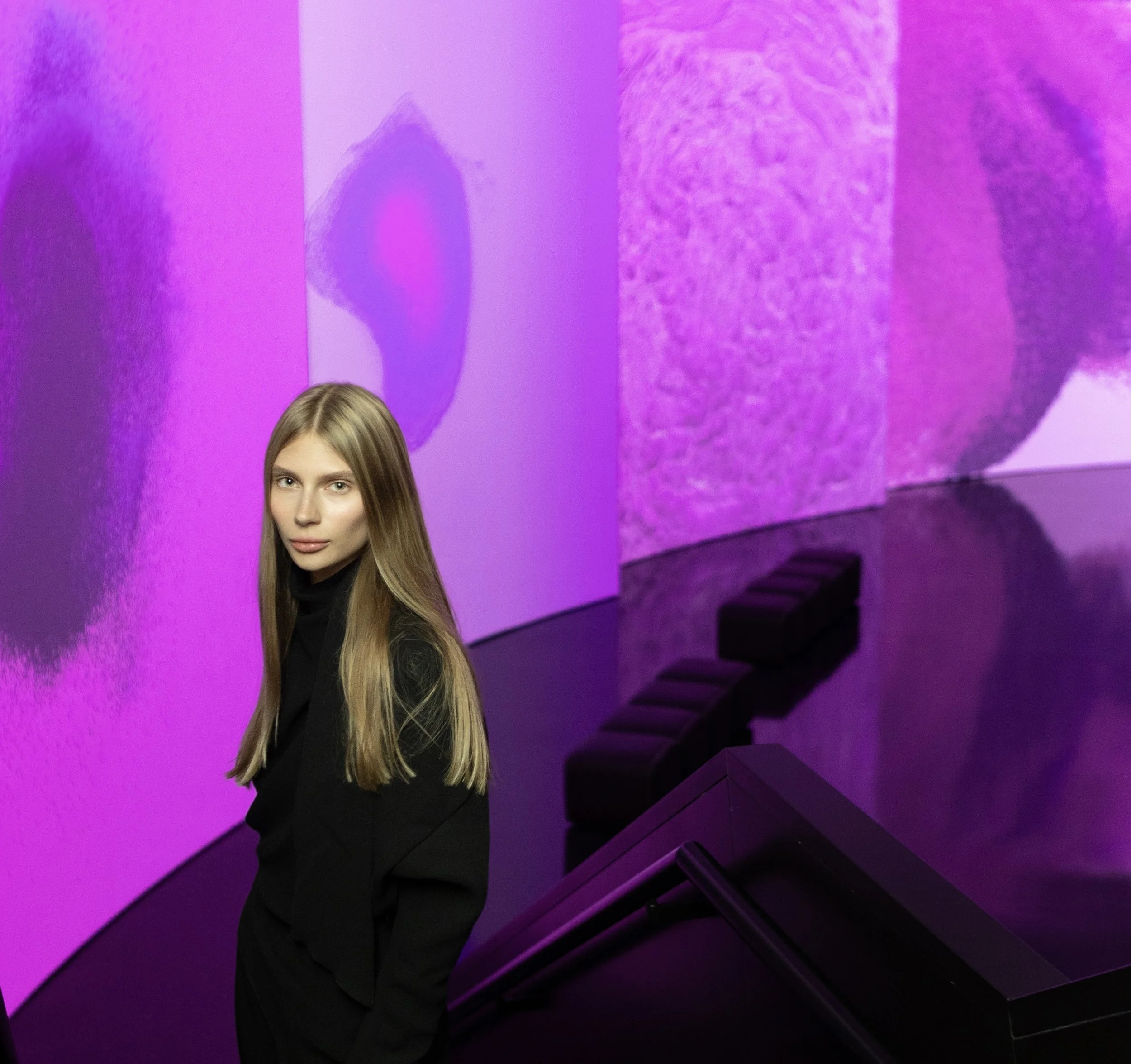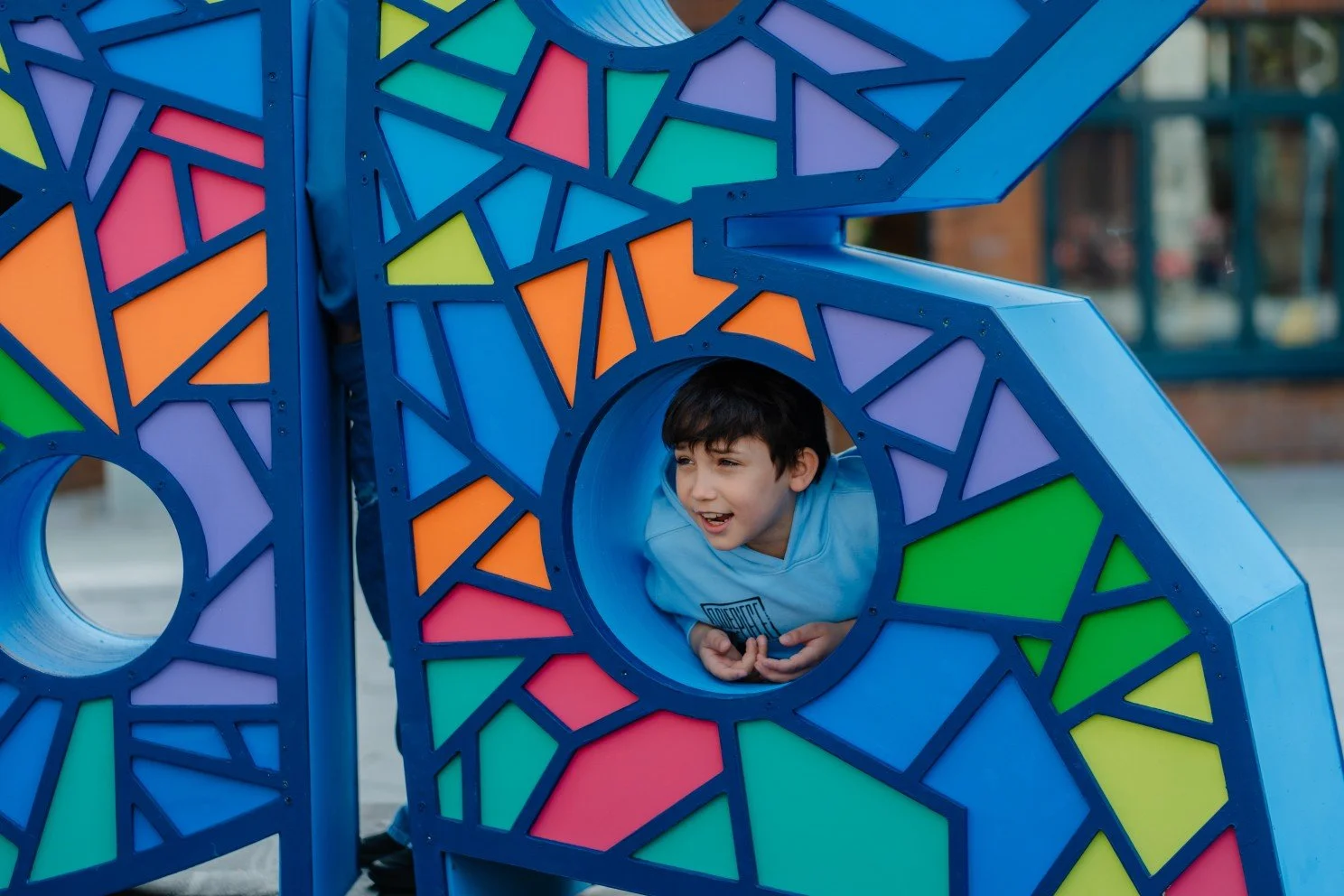INTERVIEW | Qibai Ting
10 Questions with Qibai Ting
Qibai is an artist currently based in Beijing and London. Her practice mainly focuses on narrative objects and sculptural installations.
Qibai is interested in stargazing activities, and she considers her works as “constellations”. Focusing on the perception of time and space, she holds a vertical mode of cosmology to view the present world. Living very close to forests and mountains, she identifies with the philosophy of nature and practices within landscape.
She is working towards her MA in Contemporary practice at the Royal College of Art. As a contemporary artist, Qibai aims to bridge the gaps between fragments of everyday experience and the flow of continuous subjectivity consciousness.
Qibai Ting - Portrait
INTERVIEW
Who are you, and how did you develop into the artist you are today?
I am Qibai Ting, and I am currently studying at the Royal College of Art in London. I come from Tai'an, which is a city with forests and mountains in the east of China. My art practice mainly focuses on narrative objects and sculptural installations. Becoming an artist is quite a natural thing for me. I am hiking towards contemporary art, and my desire has led me to the present, to create, to understand what has shaped our current world, and to question why we have reached the existing circumstances.
Timefinder, Installation, 200x200 cm, 2024 © Qibai Ting
Can you share more about your journey as an artist, from your beginnings at Renmin University of China to your current MA at the Royal College of Art? How did these different experiences influence your work?
When I studied at Renmin University in Beijing in my first year, I enjoyed reading in the library and colliding with opinions in debates, absorbing inspirations from literature, poetry, philosophy, and art history. Every discipline offered a refreshing perspective to view the world I could not resist exploring. However, there was a pandemic throughout my last three years of university; I had to stay at home initially. At that time, I sit on stones beside the river, reading and drawing in my hometown. I found it gave me a chance to meditate and think about the relationships among the world, groups, and individuals. So, at that time, what I discussed was more about existence. Now, I am studying at RCA, which gives me another perspective on understanding the world. I realize that we are living in a world of rapid change, historical catastrophes, mass migrations of people, and the underlying threat of wars. I become more aware of my identity and contexts towards contemporary art practice. So, my new work, Timefinder, is trying to identify and place myself in a spiritual homeland under the current world.
In your statement, you mention living near forests and mountains. How does this influence your artistic practice and philosophy? Do you find yourself more motivated to make art there than in big cities?
I believe my original experience shapes my perspective on nature. I hold a cosmology with a vertical model to understand the relationship between the sky and the Earth. The mountain is not only an actual place in a physical place but also a spiritual structure. Living close to a forest, I have a natural affinity for wood, and I usually collect wood to make art. My reflections on nature, force majeure, and dynamic interactions between humans and the living environment have guided me to recognize my identity and take a freer creation path. I work with found objects and practice within the landscape in an original intuition to express natural boundaries, primordial scenes, and poetic reality. So, my hometown is a place that inspires me positively to make art, unlike the hustling and bustling city.
Constallation, Installation, 200x180x200 cm, 2022 © Qibai Ting
Your work often explores the perception of time and space. Can you elaborate on how you translate these complex themes into your narrative objects and sculptural installations?
Imagine a beginning with nothing, neither time nor space; how can we describe this kind of void? It can be really hard to identify this experience because time and space are actually limits that make our perception emerge. The purpose of my art practice is to explore boundaries, and I try to keep a state of generating. I constantly change material, placement, and environment to imagine an original world with a balance between the physical and spiritual worlds. Nowadays, we can easily get access to various commodities, everyday objects, and historical antiques; while I am questioning the difference between them and the artworks I work on, are they essentially the same things? My focus is more on the origin of objects, like the connections between a clock and an hourglass in the theme of time or the poetic transformation from landscape to music.
Let's now talk about your Giant's Toe Series. The series seems deeply connected to natural elements and myths. What was your inspiration behind this series, and how did you develop it from the concept to the final product?
I was inspired by the association of some giant myths of nature. In Chinese mythology, the Giant Pan Gu separated Heaven from the Earth. When he died, his body turned into mountains, and his blood became rivers. The artworks come from the perception of the weight of natural things and the impression of the frozen river. Giant's Toe is able to absorb large amounts of water in order to gain great weight and, therefore, obtain its state of rest. I spent a long time in this environment and felt a kind of soft power in nature. I would like to describe a change instead of an instance like the one depicted by traditional landscape paintings. I used ice because it was November and the river was frozen, so I could get a lot of materials. I just kept changing the mediums in the installation process. Temperature would help me to finish this project.
Another series that caught our attention is Weather Forecast. Can you tell us more about it? What is the main idea behind the series, and what messages do you want to convey?
I focused on the concept of "window" in art history within the fine art installation context and converted a drawing-specific concept, "frame," into a way of seeing. Window is an ideal position for observation. In this project, artificial windows were constructed with delicate-chosen materials, which represent the vital elements, namely light, dynamics, and composition. I use objects, including pigments, humidifier, bulbs, to describe colour,degree of wetness, light, dynamics, composition and so on.
Weather forecasting is actually a process of prediction of what might happen from observation to understanding and interpretation, from my personal perspective, it's similar to contemporary art system. It could be right it could be wrong sometimes.The process of interpretation is quite important.
Window Series 3, Installation, 60x90 cm, 2024 © Qibai Ting
Window Series 4, Installation, 60x90 cm, 2024 © Qibai Ting
In your statement, you describe your works as "constellations." This is an interesting definition, would you further explain what you mean? And how do you see these different constellations intertwine and mutually influence each other?
I am interested in stargazing, and the most exciting part is finding patterns of stars at different times. In my view, theconstellation is not a two-dimensional pattern but a three-dimensional image in which there are different views at differenttimes, locations, and viewing angles. Constellation is a metaphor of orientation that I can use to find potential connections among my works. Some work can be very distant and metaphysical, while others can be very close and realistic. It literally depends on the exhibition space, cultural contexts, and viewing perspectives. My works can be reconstructed and assembled in different conditions, for they are navigated in a star map so that I won't get lost.
You work with different techniques and mediums. Ultimately, what is your preferred medium of choice? And what drives you towards one medium over another when creating a new series?
My initial area of interest was an interdisciplinary and creative approach through the reconstruction of the objective character of the materials. But now, I consider concepts more than techniques and mediums. I typically begin with an intriguing word and then collect objects, texts, and images about it. I polish the concepts simultaneously with the object collection before I choose the medium, and it depends on the physical property and visual expression. For example, when I try to visualize the sky, I prefer to use lights and colors instead of actual physical material to describe it.
Window Series 2, Installation, 60x90 cm, 2024 © Qibai Ting
How do you see your work evolve in the next few years? Is there any new medium you would like to incorporate or any new technology you would like to test?
I seek to further explore the topic of time-space in the conceptual art field and the consequences brought by artworks caught up in vortices in this era's flowing and instantaneous global communication. I crave to outline a comparative perspective mappings from idea, value, and culture to globalization, social development, and post-colonialism about the boundary between time metaphor and historical contexts. As for the future orientation of work, my focus will be directedtoward exploring metaphorical time and space from a comparative view of East and West to produce artwork with tangible materials.
Lastly, what are your next projects? Do you have any upcoming exhibitions or publications where our readers can find your work?
I am working on the Timefinder project, which explores our system of time, based on the day, one rotation of the Earth. So, the original timefinder concept was about the motion of something or something in motion. I polish a sand table with building models, abstract mountains, and other symbolic landscape sculptures. Now, I am preparing for my degree show opening in the middle of June.
Artist’s Talk
Al-Tiba9 Interviews is a promotional platform for artists to articulate their vision and engage them with our diverse readership through a published art dialogue. The artists are interviewed by Mohamed Benhadj, the founder & curator of Al-Tiba9, to highlight their artistic careers and introduce them to the international contemporary art scene across our vast network of museums, galleries, art professionals, art dealers, collectors, and art lovers across the globe.





















